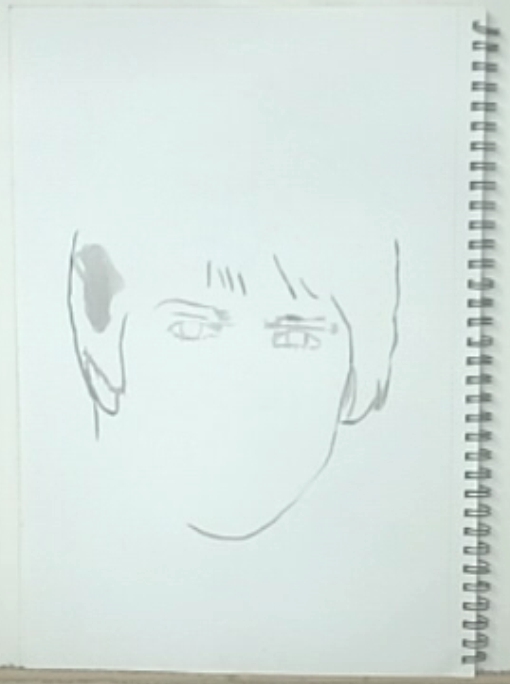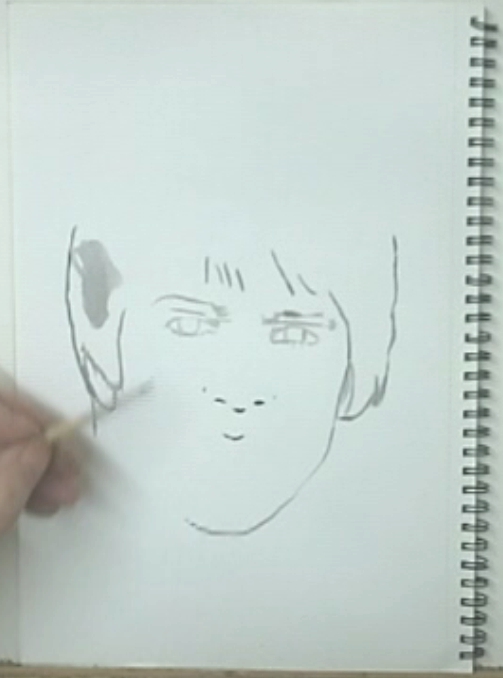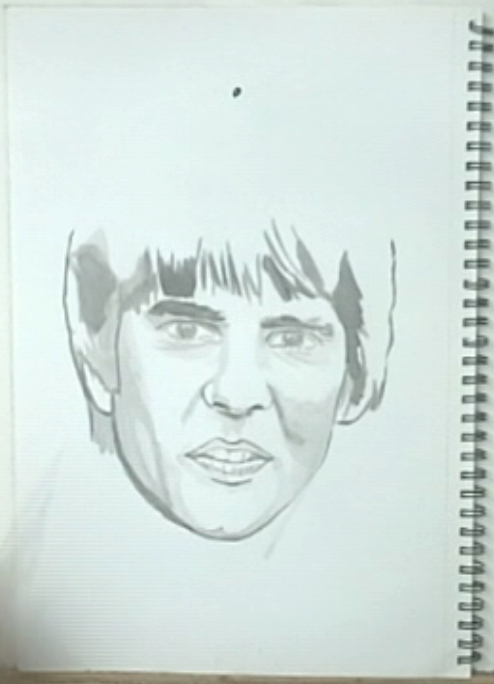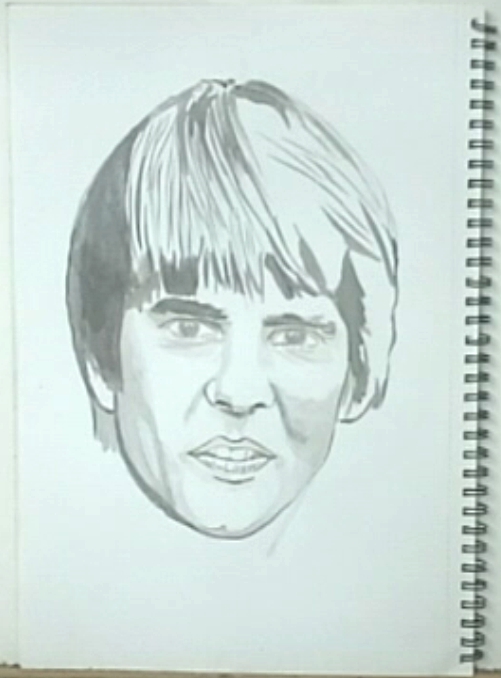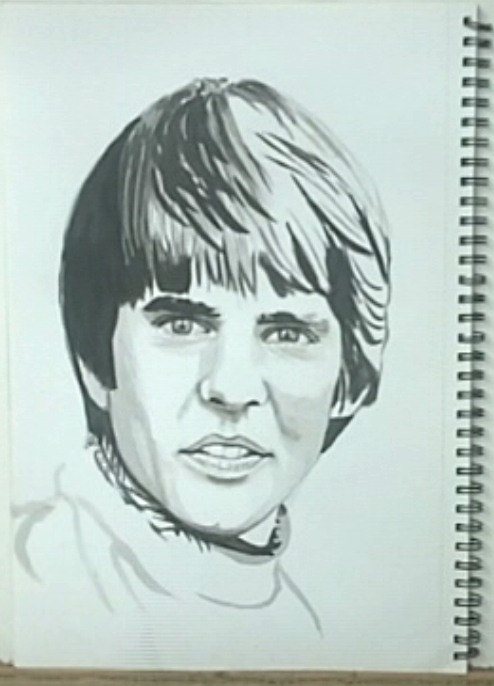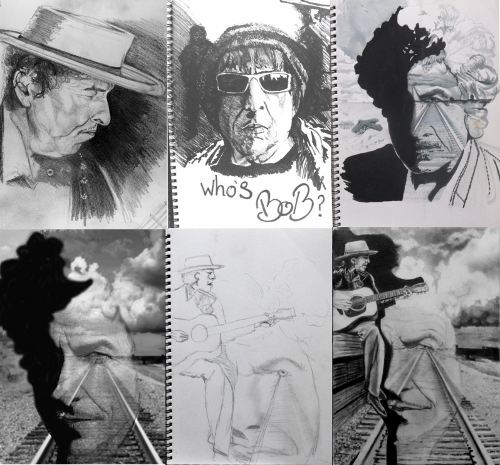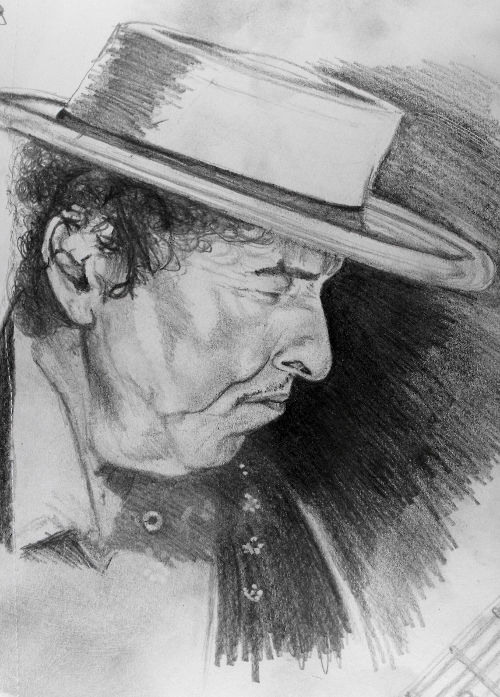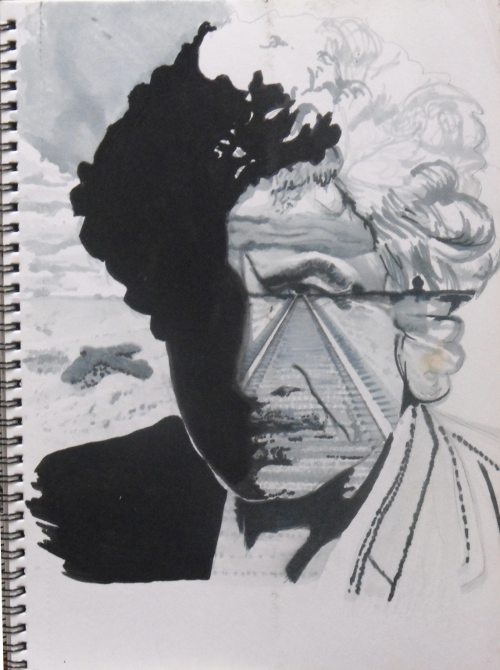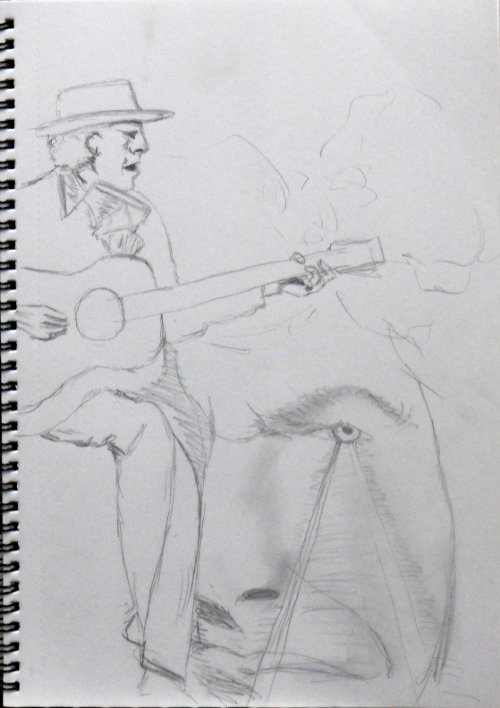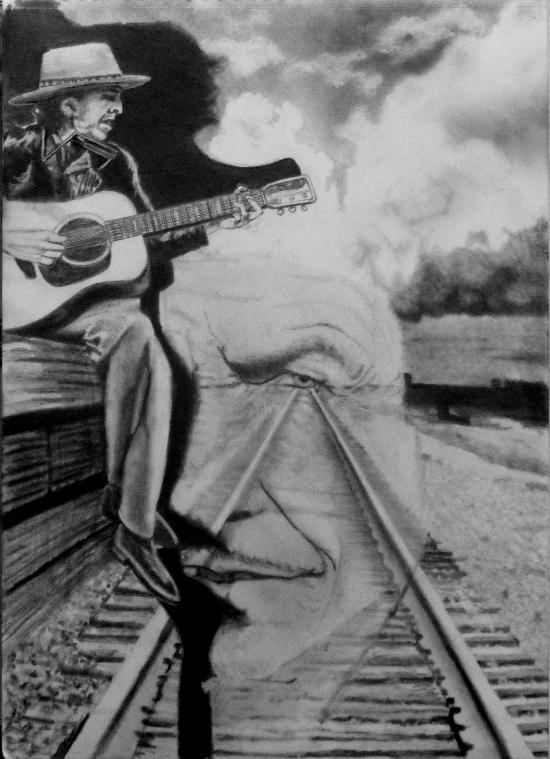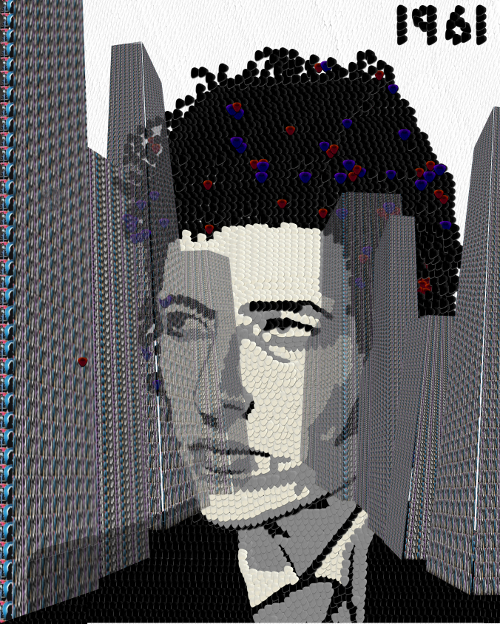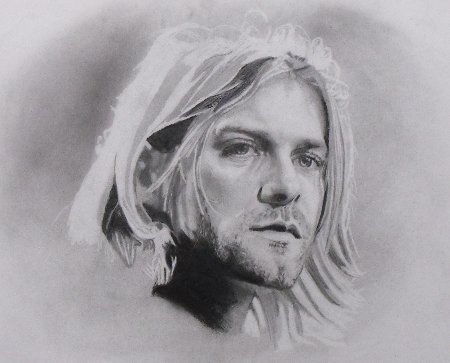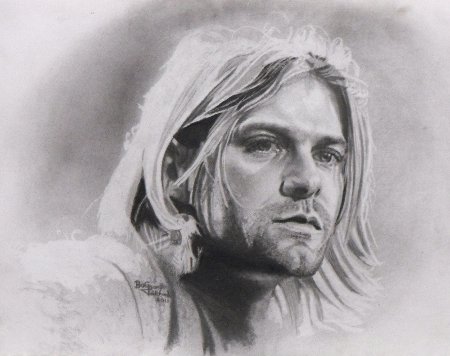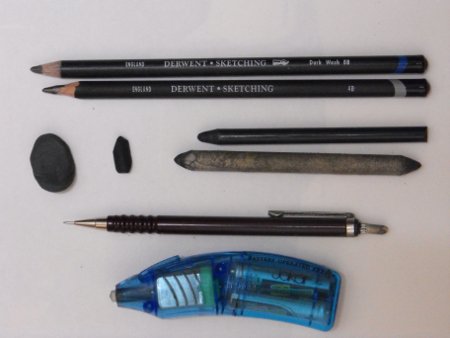How to paint portrait drawings with ink.
In this example of how to paint portrait drawings I paint a portrait of Davy Jones, who was most famous as the singer with the 1960s pop group, The Monkees. This piece of work took 1 hour 14 minuets to complete from start to finish and was painted with a brush, using black Indian Ink.
A video example of how to paint portrait drawings.
The tools I use to show you how to paint portrait drawings are as follows: black Indian Ink, clean water, a small soft number one brush, tissue paper, an A4 drawing pad and a little plastic bottle top for mixing my wash into.
In this first image below I have drawn a basic outline of the eyes and sides of the head, using ink that has been watered down into a wash. This helps because it makes it more easily corrected later, if I get some of the marks wrong which is almost guaranteed to happen, as I am not perfectly accurate with my outlines. This is the reason and point of making basic outlines when learning how to paint portrait ink painting is because none of us are perfect. Learning to draw is a step by step process where each step leads to and informs the next step.
The information below will walk you through the process step by step.
You will notice a big dark area on the left hand side of the head in the images below. This area is where I will be testing out my tonal values, whilst I am working away at the drawing to make sure they are not too dark. It does not matter if they are too light because I can always darken them again later if I need to.
Water proof inks.
Inks are usually water proof so dry quickly and are very difficult to make lighter again if an area is too dark. You shouldn’t ever use ink that is too dark to do your basic outline when learning how to paint portrait paintings with ink and then you will never have this problem.
I also work wet into wet, which means that I add a little more black ink as I go along, into some areas to make them a little darker, whilst the paper is still wet. This allows the ink to spread out, bleeding into the area more easily and making it better to create graduated tones from dark to light. I also have a piece of clean tissue paper in my other hand, that I use to dab out any excess ink or water from areas as I work away at my painting.
Reference points.
Please take note that in the next image below, around the nose area, I have only made a few small marks so as to use as reference points for drawing the nose in more detail later. This is to enable me to get my drawings accurate and reduce the potential for mistakes in the construction of this drawing. These reference points all make it easier to get my drawings accurate because I have them in place to judge and compare against each other as well as in relation to the subject I am copying from. This enables me to more accurately establish the correct proportions of the facial elements, such as eyes, mouth, nose, hair and overall composition of the face. This will aide me in getting the facial features all in the correct places as I build up my painted drawing of the face and will help you also when learning how to paint portrait drawings.
Rechecking information in the process of learning how to paint portrait drawings.
In the image below you will see that I have completed the mouth and added the other left hand side of the jaw line. This information has now been rechecked to make sure I have the jaw line accurate and you will notice that the jawline on the left hand side is more heavier. This is because of two reasons, one is that the face is more heavily shadowed on that side of the face and also because I did not get it quite right the first time around. It is the reason why my ink has been watered down into a wash and also why I only make small marks in my construction process of doing the painting.
In the image below you will see that I have now started putting in some of the larger areas of shading and the detail around the nose area. You might also notice that on the right hand side of the face along the line from the nose into the cheek there is a darker line at the end which is another mistake. You can also see that I have been able to hide it once again because my ink is watered down to make it lighter in tonal value.
Now in the image below you will see that I have filled the face out with more shading helping to create more shape and form to the face and again you will notice that the mistake on the cheek is becoming less noticeable. How to paint portrait drawings
Now you can see in this image below that I am using the brush stale to measure where the top of the head goes so as to get it more accurate, although you cannot see this in the video because it is speeded up, I do a lot of measuring with my thumb and the brush stale. I think that this is where the term, rule of thumb comes from as it is commonly used by many artists to measure the accuracy of there drawings and paintings. How to paint portrait drawings
Now I have made a dot where the top of the head should be so as to get this accurate. How to paint portrait drawings
In the image below you will see that I have completed the construction drawing and marked out where everything should be in relation to everything else on the face this will now make putting the detail into the drawings more easy and accurate. How to paint portrait drawings
Now with my construction drawings accurate I am starting to fill in the detail using raw black Indian Ink straight from the jar with no water added. This will now bring out the detail and give the painting more depth, defined shape and form, making it seem more like a three dimensional shape instead of a flat two dimensional drawing.How to paint portrait drawings
I have started with the eyes, nose and mouth, being careful to only paint in the darkest areas that are black, you will be amazed at how this brings the drawing to life, making it look realistic.
Notice in the completed drawing below that I have added some suggestion of the shoulders so as to make the head seem like it is not just floating around on the paper.
How to paint portrait drawings with ink is best practiced often if you really want to get better at it and just for good measure here below is another portrait painting of Bob Dylan.

